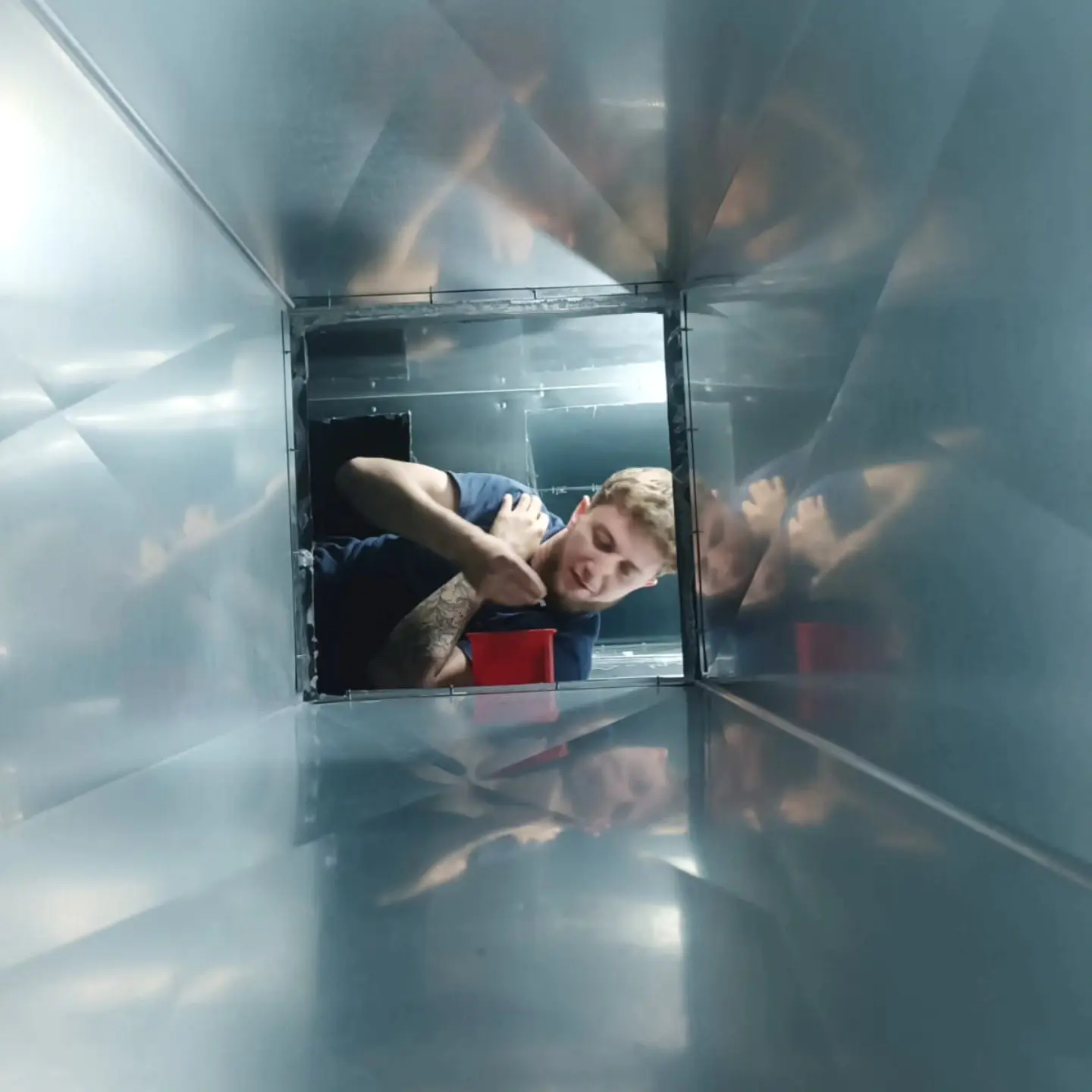TL;DR:
A well-designed kitchen extraction system isn’t just about compliance — it’s a strategic asset that improves air quality, reduces energy costs, and protects equipment. Spiteri Catering’s team includes both engineers and chefs who understand the practical demands of busy kitchens and front-of-house service.
— End of TL;DR —
Optimising Airflow, Reducing Costs, and Protecting Your Kitchen
In a commercial kitchen, extraction systems are often considered just another piece of equipment. But in reality, they’re essential infrastructure, protecting air quality, staff comfort, equipment longevity, and even customer experience.
Yet too often, extraction systems are designed without considering how kitchens actually function — from peak service hours to heavy equipment use. That’s where effective extraction design and installation become crucial.
Air Quality and Worker Comfort: The Foundation of Efficiency
In a high-pressure kitchen, poor ventilation doesn’t just make life uncomfortable — it affects productivity and safety.
Without effective extraction, kitchens can quickly become stifling, with steam, smoke, and grease particles lingering in the air. Over time, this can lead to:
-
Respiratory issues and fatigue for staff
-
Increased humidity, creating slippery surfaces and condensation
-
Elevated temperatures, making the kitchen uncomfortably hot
What to consider in extraction design:
-
Extraction zones should be strategically placed above key cooking areas, such as fryers, grills, and ovens.
-
Airflow rates must be balanced. Too much extraction pulls air too quickly, wasting energy. Too little allows steam and grease to linger.
-
Filter placement is critical. Accessible, easy-to-remove filters encourage regular cleaning and prevent blockages.
Energy Efficiency: Saving Money While Staying Cool
Kitchens consume enormous amounts of energy, and extraction systems are often a major contributor. However, poorly designed systems can end up wasting energy unnecessarily.
How extraction impacts energy use:
-
Overpowered systems extract more air than necessary, increasing heating and cooling costs.
-
Clogged filters and ducts force the system to work harder, consuming more power.
-
Unregulated airflow pulls conditioned air out of the building, leading to increased air conditioning costs.
How to design for efficiency:
-
Install variable speed controls to adjust airflow based on kitchen activity.
-
Incorporate heat recovery units (HRUs) to capture and repurpose extracted heat, reducing overall energy consumption.
-
Choose energy-efficient motors and fans sized appropriately to match the kitchen’s output.
A well-designed extraction system can reduce overall energy costs by up to 30%, a significant saving for any busy kitchen.
Operational Efficiency and Equipment Protection
In a kitchen, extraction systems don’t just protect air quality, when properly installed — they protect equipment too.
Without effective extraction, common issues include:
-
Grease build-up: Grease particles can settle on equipment, leading to overheating and increased fire risk.
-
Moisture damage: Excess steam can cause rusting and corrosion, especially in electrical components.
-
Excessive wear: High heat can strain equipment, reducing its lifespan and increasing repair costs.
Key design considerations for protecting equipment:
-
Ensure that extraction hoods cover all primary cooking equipment, directing steam and heat away from sensitive machinery.
-
Opt for high-grade grease filters that capture particulates before they reach ductwork.
-
Maintain a consistent cleaning schedule to prevent grease accumulation and condensation build-up.
Compliance and Safety: It’s Not Just About Meeting Standards
In commercial kitchens, compliance isn’t optional. Effective extraction is essential for:
-
Fire Safety: Extracting grease-laden vapours reduces fire risk.
-
Air Quality Standards: Proper airflow prevents carbon monoxide build-up and maintains safe working conditions.
-
Inspection Readiness: Regular maintenance ensures that extraction systems remain in good working order, minimising the risk of failing inspections.
Design considerations for compliance:
-
Install hoods and ducting that meet local health and safety regulations.
-
Include fire suppression systems in high-heat areas.
-
Ensure that ductwork is accessible for regular inspection and cleaning.
Customer Experience: Comfort Beyond the Kitchen
It’s not just the kitchen that benefits from effective extraction. Poorly ventilated kitchens can impact customer experience, especially in open kitchens or front-of-house service areas.
What good extraction prevents:
-
Unpleasant odours from wafting into dining areas.
-
Excessive noise from poorly positioned fans and underpowered systems.
-
Visual clutter, particularly in open-plan kitchens where the system is visible.
For customer-facing areas, a well-designed system isn’t just functional — it’s also discreet, operating quietly and efficiently without detracting from the dining experience.
Spiteri Catering’s Extraction Design and Installation Services
Investing in a well-planned extraction system goes beyond purchasing equipment. It’s about implementing a system that integrates seamlessly with kitchen operations — from airflow to aesthetics.
At Spiteri Catering, we offer comprehensive extraction system services, including:
-
Custom Extraction Design: Systems tailored to match kitchen layout, capacity, and operational flow.
-
Installation and Commissioning: Ensuring optimal airflow and compliance with health and safety standards.
-
Energy-Efficient Solutions: Integration of heat recovery systems to reduce utility costs.
-
Maintenance and Servicing: Scheduled checks, filter replacements, and system cleaning to maintain performance.
-
Upgrades and Retrofitting: Modernising existing systems to meet current regulations and improve efficiency.
-
Consultation and Assessments: Site assessments to identify airflow bottlenecks, overheating zones, and compliance risks.
Why Spiteri?
Our team includes not only engineers and technicians but also chefs and restaurateurs who understand the operational realities of a working kitchen. We design systems that support both back-of-house efficiency and front-of-house comfort — because we know that airflow affects everyone, from the kitchen porter to the diner.
Extraction as a Strategic Asset
Extraction systems are more than just a way to remove heat and smoke. They’re strategic assets, protecting air quality, equipment, and kitchen staff while reducing costs and maintaining compliance.
At Spiteri Catering, our design and installation team includes not only engineers and technicians but also chefs and restaurateurs who understand the day-to-day realities of running a busy kitchen and the expectations of front-of-house service.
This blend of technical expertise and operational insight means that every extraction system we design is tailored to both the functional and practical needs of a kitchen — from optimising airflow and managing grease control to ensuring customer comfort and front-of-house aesthetics.
Whether it’s a high-capacity hood for a bustling restaurant or a compact system for a smaller venue, investing in a well-planned extraction system is an investment in efficiency, safety, and reputation.
Ready to Optimise Your Kitchen?
If you’re planning a new kitchen, upgrading your extraction, or struggling with airflow issues, talk to Spiteri Catering’s expert team.
Our specialists don’t just understand the technical aspects — they’ve worked in professional kitchens too. We know what it takes to keep a service running smoothly, from the back of house to the front.


